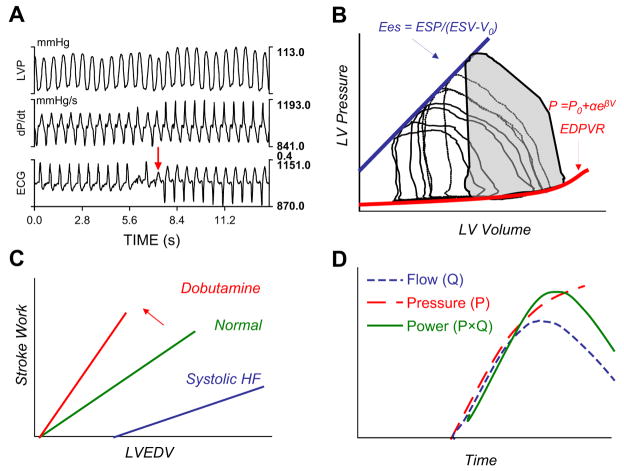Fig. 1.
(A) Time plot of left ventricular pressure (LVP), first derivative of pressure (dP/dt), and EKG in a patient who has heart failure with left bundle-type conduction delay. At the arrow, the patient received bi-ventricular stimulation resulting in an abrupt rise in dP/dtmax. (B) PV loops obtained at baseline and during transient caval occlusion (decreasing LV volumes—loops moving right to left). The slope of the EDSPV derived from multibeat analysis defines ventricular Ees, a load-independent measure of contractility. By measuring diastolic pressure and volume during diastasis at variably loaded beats, the end-diastolic PV relationship (EDPVR) is obtained. The shaded area subtended by the baseline loop represents the stroke work performed by the ventricle. ESP, end-systolic pressure; ESV, end-systolic volume; V0, volume axis intercept of ESPVR. (C) The slope of the relation between systolic chamber performance (stroke work) and preload (left ventricle end-diastolic volume, LVEDV) determines the preload recruitable stroke work. This relationship shifts up and to the left, as indicated by the arrow, with an increase in contractility, as with dobutamine, or down and to the right with systolic heart failure (HF). (D) LV power (P × Q, solid line) is determined by the product of simultaneously measured pressure (P, dashed line) and flow (Q, dotted line). When indexed to preload, this calculation produces another load-independent measure of LV chamber contractility.

